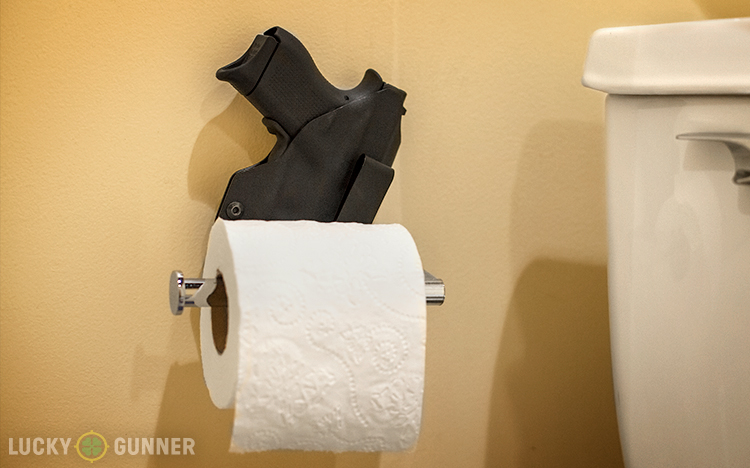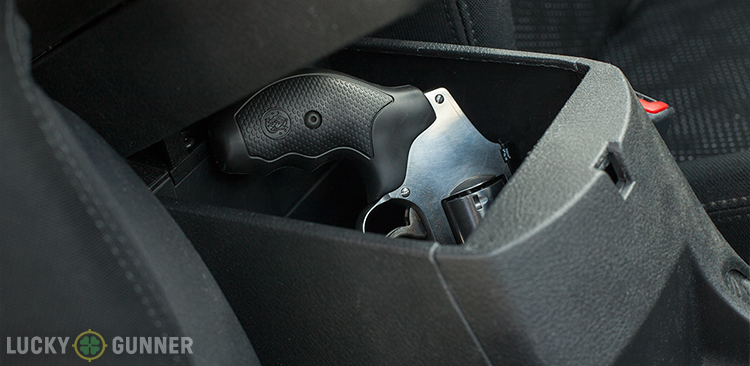As a teenager, I saw my first negligent discharge with a firearm. My family was hosting our annual fourth of July shoot on our property, and it started to rain. The range area was cleared, and the firearms were all moved into a barn via a picnic table that had been the makeshift shooting bench.
The festivities continued, and no one paid much mind of the table of firearms laid out in the middle of the group. A pre-teen boy, who wanted to show his friend a handgun he’d learned to shoot that day, picked it up and put a round into my father’s barn. The fact that he did not hit anyone is nothing short of a miracle.
There was a lot of discussion about what could have been done to prevent that situation. No one thought they were being unsafe. Everyone assumed they knew how to safely handle firearms, and no one imagined that an innocent and curious boy would pick up a gun without asking. The mixture of overconfidence, erroneous assumptions, and questionable practices resulted in a lot of learning with, thankfully, little damage.
The annual shoot was skipped for a few years until several of the teens that were present that day went on to get instructor credentials or become competition shooters and range safety officers. With more watchful eyes, the shoots returned and were carried out more safely.
No Exceptions
Human beings are a cocky bunch. We like to think we know better or that we are above something like a negligent discharge. We handle and play with our firearms at times and in locations we have no business doing so. When we can’t avoid administrative handling, sometimes we aren’t always as careful as we should be. A lot of us like to pretend the rules don’t apply to us.
As my friend Kathy Jackson once told me, “There are no exceptions to the rules, but everyone likes to think they are the exception.”
Obviously, if you carry a firearm for defensive purposes and are confronted with a lethal force encounter, that is a time to consider drawing a firearm. Otherwise, it’s best to limit our handling to arming, disarming, training, practice, and cleaning. Here are some other times we might handle our firearms when we probably shouldn’t:
Bathroom
Every individual who carries a firearm for defensive purposes will find themselves having to go to the bathroom while carrying a firearm. If you Google “gun accident bathroom” or “concealed carry bathroom”, you’ll get a litany of advice on how to do it safely, mixed with stories of people shooting themselves, shattering toilets, and otherwise putting bullets into bathroom fixtures.
For all the information out there about how to safely carry a gun in a bathroom, it still seems to be a place where gun handling is done all too frequently and not always safely. Even those who don’t put holes in bathroom floors sometimes leave their firearms behind to be found by movie goers, elementary school children, and other unwitting restroom visitors.

Luckily, the bathroom-gun-handling solution is often a mere holster purchase away. Getting a holster that allows you to keep your firearm secured even while you drop trou can be all that’s needed to keep you from having to handle your firearm mid-business.
If you must remove your firearm, invest in a holster that allows you to remove the firearm and the holster together, and consider placing them in the seat of your pants as you do your business. It’s hard to forget a pistol that’s keeping you from pulling up your drawers.
Car
Unfortunately, we gun people can’t get away with carrying our firearms uninhibited everywhere we go. While some state laws allow far more freedom than others, eventually we all run into situations where we need to leave our guns in our cars. For this reason, it’s always a good idea to have some sort of safe in the vehicle.
Some folks commonly remove their firearms and put them in glove boxes or center consoles. The transitions from holster to or vehicle storage has resulted in injuries and death, or firearms have been left in vehicles and later found by children and other unauthorized individuals.

We can’t always avoid briefly leaving our guns in our vehicles, but we can limit that to moments of extreme necessity and be smart about the transition.
Having the car safe open and prepared for a firearm, void of any other debris, with careful consideration to trigger finger discipline and safe direction can go a long way to mitigate the risks of a negligent discharge in a vehicle.
If you are someone who must frequently remove his firearm in a vehicle, you might consider purchasing a holster that has the capability of being removed with the firearm so that both can be secured together without removing the handgun from the holster. If you are removing your firearm to drive due to comfort issues, you may want to consider a different holster system entirely. Depending on body type, firearm make and model, holster quality, and placement, it very well may be possible to find a solution that doesn’t require the removal of the firearm to drive comfortably.
Gun Stores and Shows
Gun stores are a place to handle guns. You get to pick them up, fondle them, look at them, feel them and talk about them. If there was one place where it would be okay to fondle your firearm, a gun store would be it.
That’s not always the case.
While gun stores are generally gun friendly, things can get rather tense when customers start pulling firearms out of their pockets, holsters, and bags.
Walk into almost any gun store in America that has been open for more than a few years, and the employees will tell you stories about customers who pulled loaded firearms from bags, pockets, and holsters for all manner of reasons. They might even be able to show you the bullet holes that resulted.
This customer wants to remove his gun to see if a new gun will fit in his holster. That customer wants to compare his carry gun to a potential purchase. Another customer just wants to show the clerk what they currently carry.
These situations are usually handled tactfully by staff members, but they still happen with surprising regularity. If your intention is to present a firearm in a gun store for any reason, it would be best to contact the store in advance for their best advice on how to go about that, or at least verbally ask them how they’d prefer you proceed. Some stores might have areas where you can clear your firearm. Others might prefer you bring the firearm in already unloaded. If you are unsure how to safely unload your firearm, or even check if it is loaded or not, they may have someone on staff who can help you but they all prefer being alerted to the situation before guns start appearing from under coats and out of bags.
The Range
Just like the store employees that can tell you countless stories of customers pulling firearms in their stores, any instructor or range safety officer can tell you a dozen stories of people who pulled guns behind firing lines or otherwise handled them in areas they should not be handled.
Most people do not intend to break range rules, but people who are new or intimidated or unfamiliar with range etiquette can unintentionally find themselves breaking range rules. If you come from a range that was a little more lax with their policies or from a private-land range where there were no rules for specific handling, it can be an adjustment to handle your firearm in certain designated areas or times.
A careful review of the range rules and etiquette, and a good conversation with the range safety officer or staff can mean a safe and productive practice session or class with no embarrassing gaffs. Any instructor worth his money will lay out the expected range practices and expectations for his students, and as long as you abide by those rules, you should have a fun, productive time on the range.
With very few exceptions, the only time and place to handle a firearm on the range is at the firing line with careful consideration to the other four rules of safe handling: safe direction, trigger finger discipline, and target identification. Careful consideration should also be put on what individuals wear to the range as hot brass falling into clothing or shoes has been attributed to more than a few accidents.
While safe gun handling would go far to eradicate a majority of negligent discharges, we could reduce them further by limiting the times we handle and remove our firearms from our persons. If you’re finding yourself removing your firearm for any reason other than practice, training, cleaning or storage in a secured case you may want to consider why and change your practices or holsters or both. Keep your firearms handling to a minimum and you’ll minimize your risks of negligent discharges.


Somewhere in Heaven, Jeff Cooper shakes his head and is not pleased.